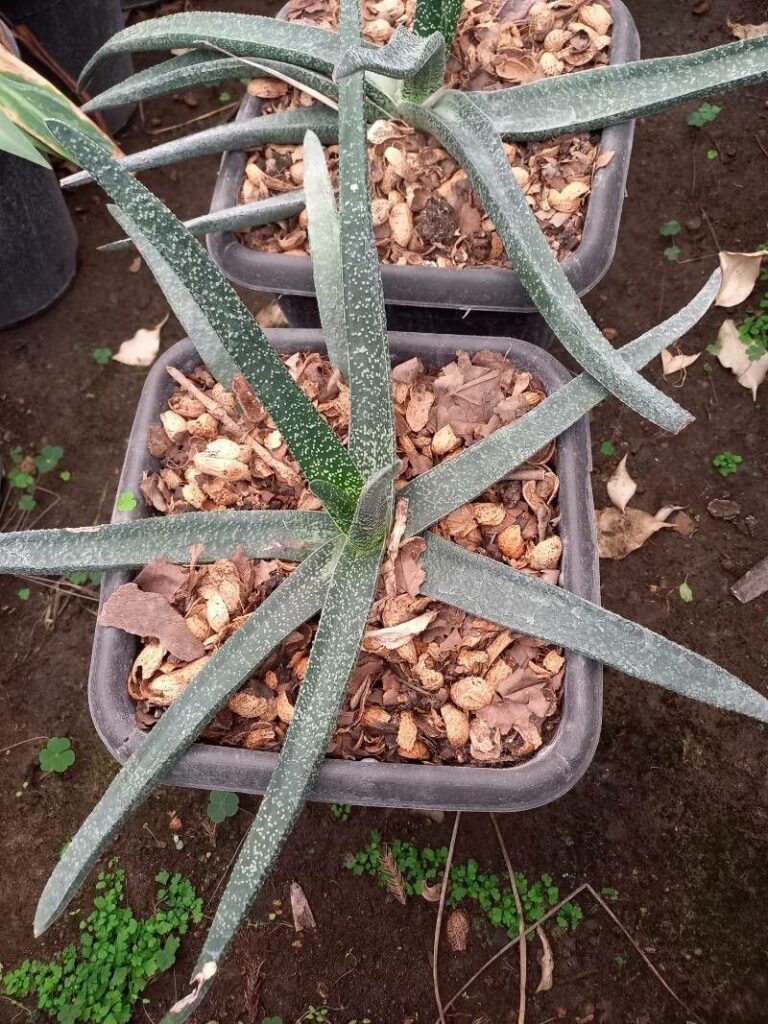Unearthing the Secrets of Gasteria Acinacifolia Propagation: From Offsets to Seeds!
Gasteria acinacifolia, with its captivating, tongue-like leaves, is a succulent prized for its unique beauty and low-maintenance personality. If you’re lucky enough to have one gracing your home, you might be wondering how to welcome more of these fascinating plants into your life. Fear not, fellow plant enthusiast, because propagating Gasteria acinacifolia is an achievable feat, even for beginners! Let’s delve into the different methods you can use to expand your succulent collection:
1. Offsets: The Easiest Route to Success
Gasteria acinacifolia naturally multiplies by producing “pups” or offsets – smaller clones that sprout around the base of the mother plant. Propagating through offsets is the simplest and most successful method. Here’s how:
- Identify mature offsets: Look for offsets that are at least a third the size of the mother plant and have developed their own set of roots.
- Separate with care: Using a clean, sharp knife or pair of scissors, carefully separate the offset from the mother plant, ensuring you get as much of the roots as possible.
- Let the wounds heal: Allow the cut surfaces of both the offset and mother plant to dry and callous for a few days. This prevents rotting when planted.
- Potting Time: Choose a well-draining potting mix specifically designed for succulents and cacti. Plant the offset at the same depth it was in the original pot.
- Water sparingly: After potting, water lightly and only when the soil has completely dried out. Overwatering is a common pitfall, so err on the side of caution.
With proper care, your offset will thrive and soon resemble its parent plant!
2. Leaf Cuttings: A More Patient Approach
While not as common as offset propagation, Gasteria acinacifolia can be propagated from leaf cuttings, demanding a bit more patience and a touch of luck:
- Select a healthy leaf: Choose a mature, healthy leaf from the mother plant.
- Make a clean cut: Use a sterilized, sharp knife to cut the leaf cleanly at its base.
- Callous time: Allow the cut end of the leaf to dry and callous for a few days, similar to the offset method.
- Encourage rooting: Dip the calloused end in rooting hormone (optional but recommended) and lay it horizontally on top of a well-draining potting mix. Ensure the cut end is slightly buried.
- Mist and wait: Mist the soil lightly whenever it dries out. Be patient, as it can take several weeks or even months for roots and a new plantlet to develop.
3. Seeds: A Long and Rewarding Journey
Propagating Gasteria acinacifolia from seeds is the most time-consuming method, but it offers a unique sense of accomplishment:
- Source your seeds: Purchase seeds from a reputable supplier to ensure viability.
- Surface Sow: Sprinkle the seeds on top of a well-draining seed starting mix. Do not bury them.
- High Humidity: Create a humid environment by covering the pot with plastic wrap or using a humidity dome.
- Light and Warmth: Place the pot in a bright location, but out of direct sunlight. Maintain a warm temperature (around 70-75°F).
- Germination Patience: Germination can take anywhere from a few weeks to several months. Once they sprout, continue misting regularly and gradually acclimate them to lower humidity levels.
Tips for Success:
- Always use well-draining soil and pots with drainage holes.
- Provide bright, indirect light.
- Water sparingly, allowing the soil to dry completely between waterings.
- Be patient! Propagation takes time, so don’t get discouraged if you don’t see results immediately.
Propagating your Gasteria acinacifolia is a rewarding experience, allowing you to share your love for this striking succulent with others. So, choose your preferred propagation adventure and get ready to expand your succulent family!
